Driver’s Satisfaction Report
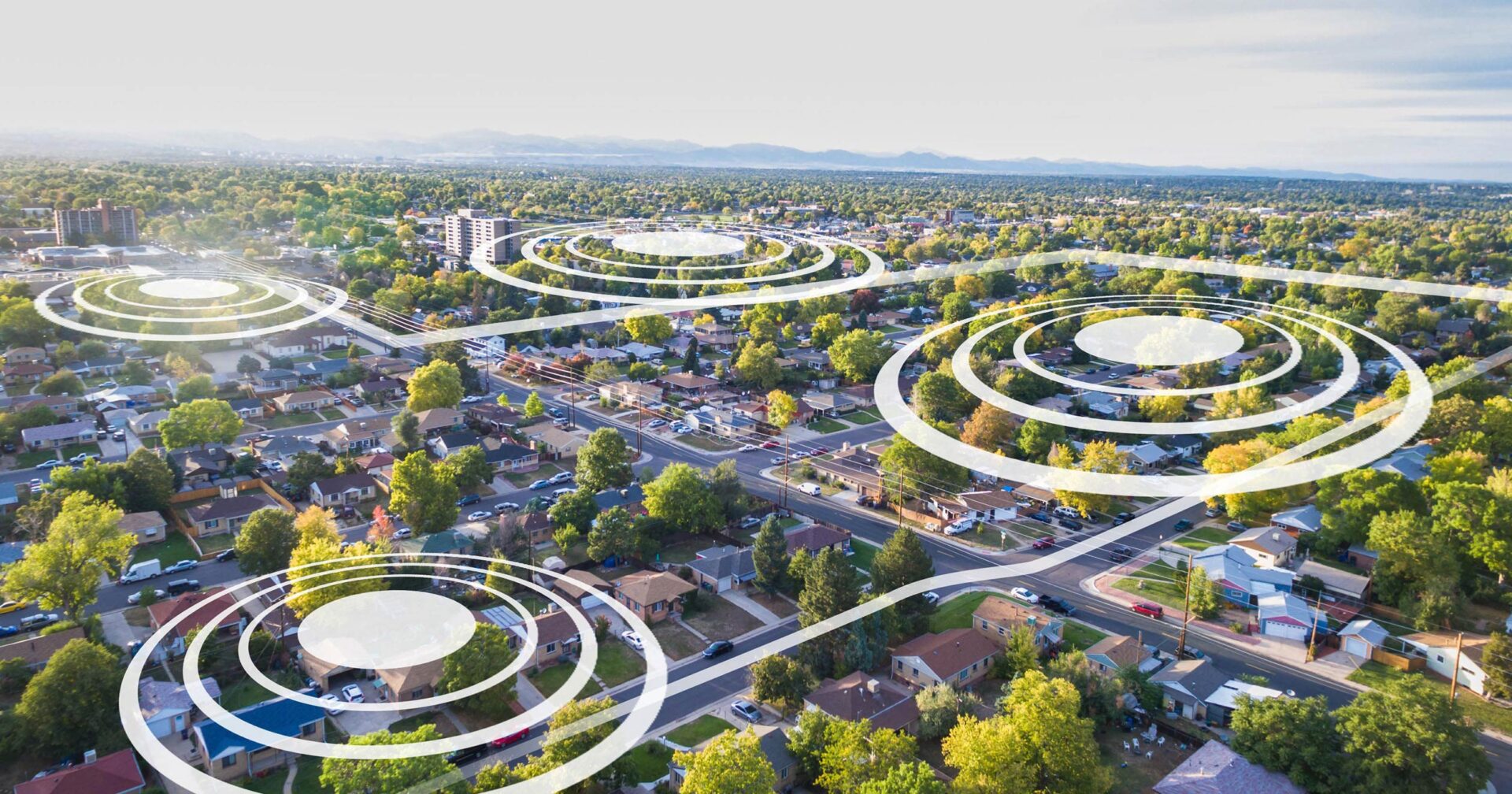
Introduction
For more than 15 years, there has been growing interest in customer experience. One of the main reasons is companies are more than ever competing to differentiate themselves not just on price and product features (where, in many cases, there is already a lot of parity) but to deliver the highest level of customer satisfaction.
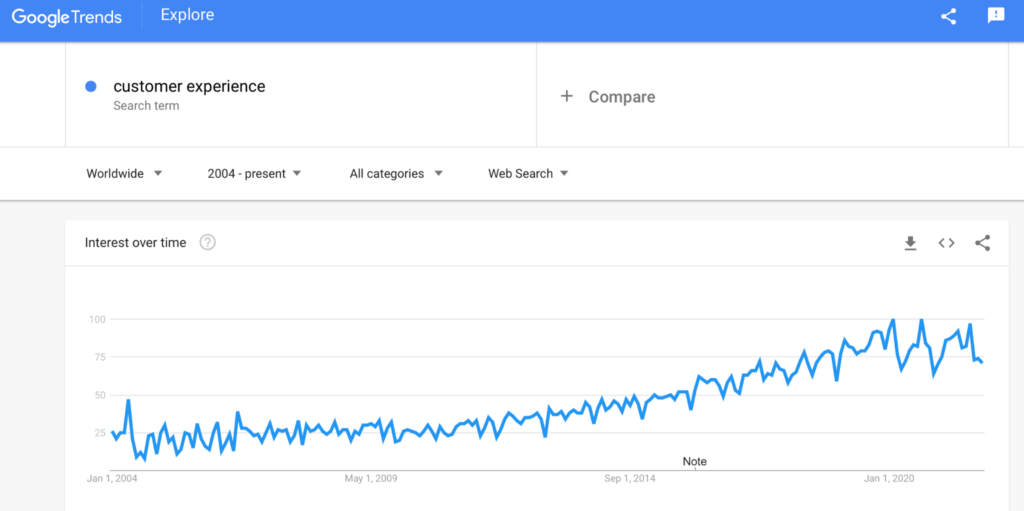
What is customer experience?
“Customer experience is the internal and subjective response customers have to any direct or indirect contact with a company,” Andre Schwager and Chris Meyer write in their 2007 Harvard Business Review article, “Understanding Customer Experience.”1
“Direct contact generally occurs in the course of purchase, use, and service and is usually initiated by the customer,” Schwager and Meyer explain. “Indirect contact most often involves unplanned encounters with representations of a company’s products, services, or brands and takes the form of word-of-mouth recommendations or criticisms, advertising, news reports, reviews, and so forth.”2
Put more simply, customer experience is “how your company meets (or doesn’t meet) customer expectations from each interaction between the customer and your company.”3
In the supply chain and logistics realm, there are many opportunities to either delight or disappoint a customer. Last-mile delivery, however, is the final moment of truth. Everything can go perfectly well on the front end of the sales process, but a poor delivery experience can quickly negate it all.
Last-mile delivery is tightly linked with customer experience, which is why when we asked members of our Indago supply chain research community in February 2021, “What is the primary factor driving innovation in last-mile delivery at your company today?” the number one response – by a wide margin – was “To deliver an enhanced customer experience.”4
What is the primary factor driving innovation in last mile delivery at your company today
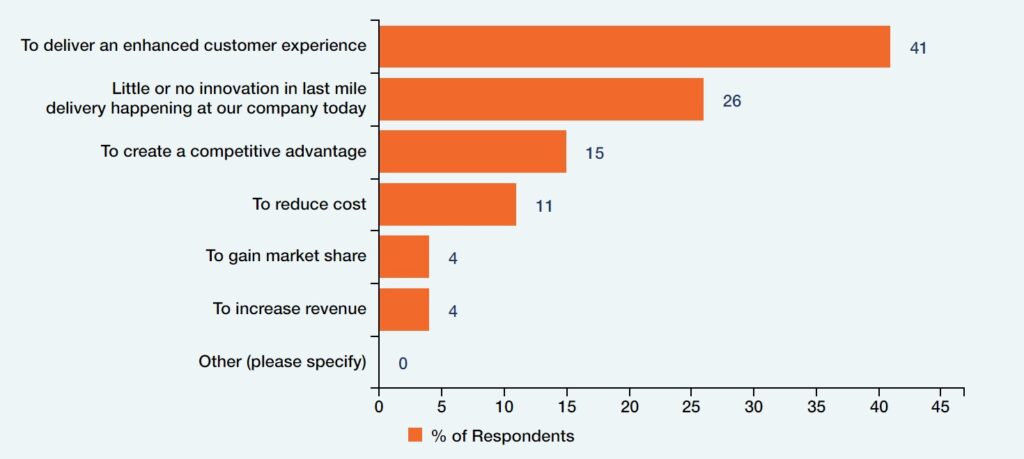
Similarly, in a survey we conducted in October 2021 with 28 leading parcel/package delivery companies, national postal carriers, retailers, and other companies with last-mile and home delivery operations, an overwhelming majority of the respondents either “Strongly Agreed” (85%) or “Agreed” (11%) that customer service for last-mile delivery will become a greater competitive differentiator in their industries.
Do you agree or disagree that customer service for last mile-home delivery will become a greater competitive differentiator in your industry over the next 1-3 years?
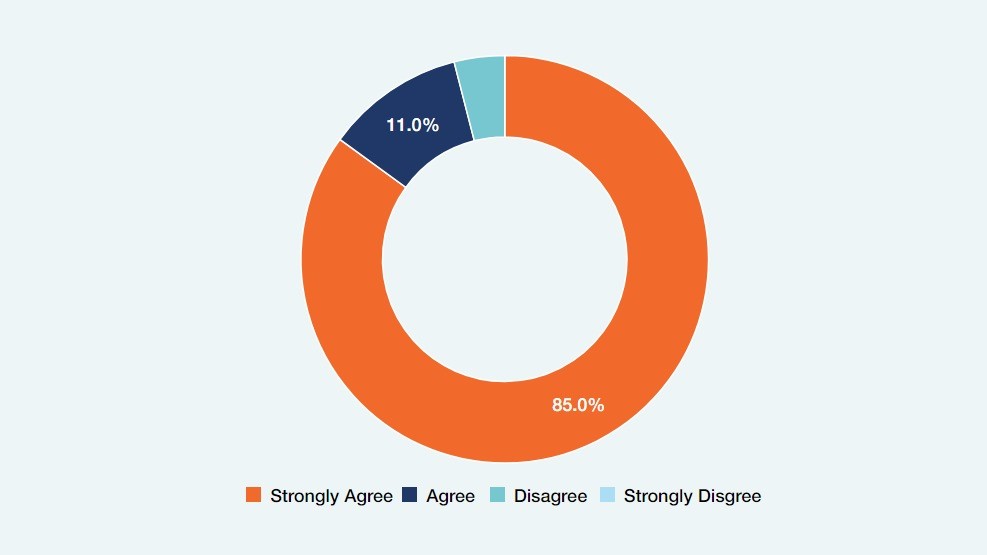
A lot has been written about the link between customer experience and last-mile delivery. The focus, however, has predominantly been on how to become a customer-centric company, with Amazon often held up as the poster child for this approach (“Customer Obsession” is the first item on the company’s “Leadership Principles” list).
No doubt, taking a customer-centric perspective is important. This includes having your customers define what an enhanced delivery experience means for them and use their definition (not yours) as your guide.
However, there is another important component (approach, philosophy) to delivering an enhanced customer experience, as expressed by these two famous business leaders:
“Clients do not come first. Employees come first. If you take care of your employees, they will take care of the clients.”
– Richard Branson, Virgin Group Founder5
“When you hire good people, and you provide good jobs and good wages and a career, good things are going to happen.”
– James Sinegal, co-founder and former CEO of Costco6
In the world of last-mile delivery, which employees are in the driver’s seat to deliver the best customer experience?
The answer, of course, is drivers.
Exploring the Link Between Driver Satisfaction and Customer Satisfaction
In our October 2021 survey, we asked participants, “When it comes to last-mile/home delivery operations, do you agree or disagree that there is a direct link between driver satisfaction and customer satisfaction?”
Almost 90% of the respondents either “Strongly Agreed” (64%) or “Agreed” (25%) there is a direct link between driver satisfaction and customer satisfaction.
When it comes to last-mile/home delivery operations, do you agree or disagree that there is a direct link between driver satisfaction and customer satisfaction?
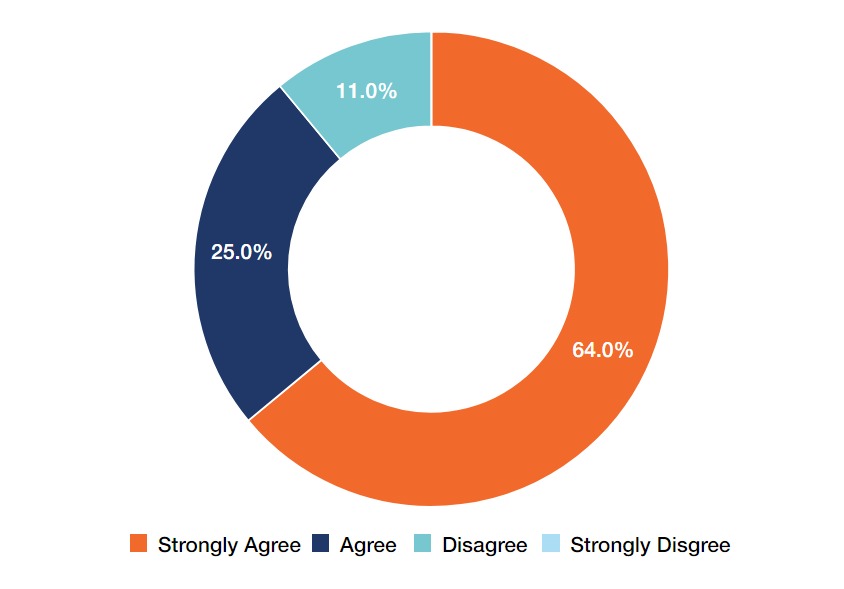
However, more than half of the respondents (57%) currently do not measure driver satisfaction, compared to 29% who do measure it (the balance does not know).
How would your customers rate your drivers?
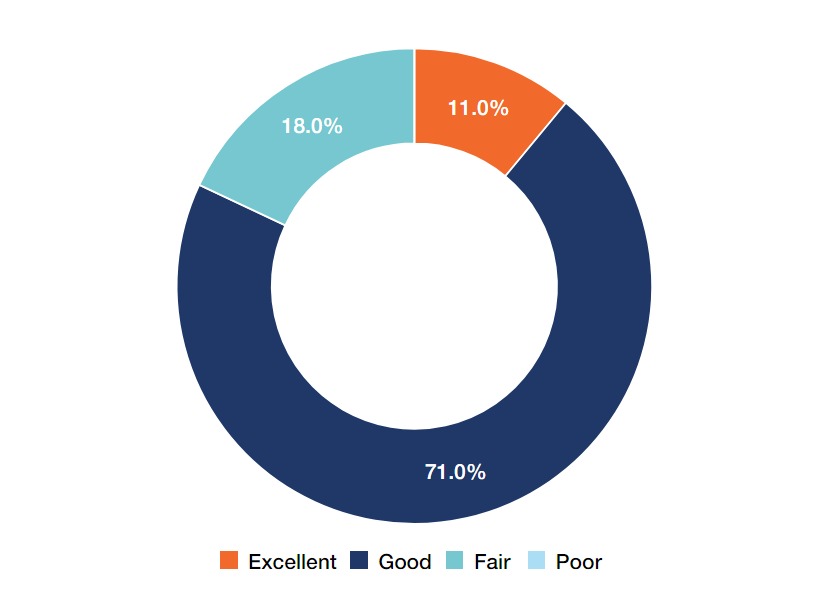
The results are very similar with regards to service. Three-quarters of the survey respondents said their customers would rate their last-mile/home delivery service as “Good.” Only 14%, however, said their customers would rate their last-mile/home delivery service as “Excellent.”
How would your customers rate your last-mile/home delivery service today?
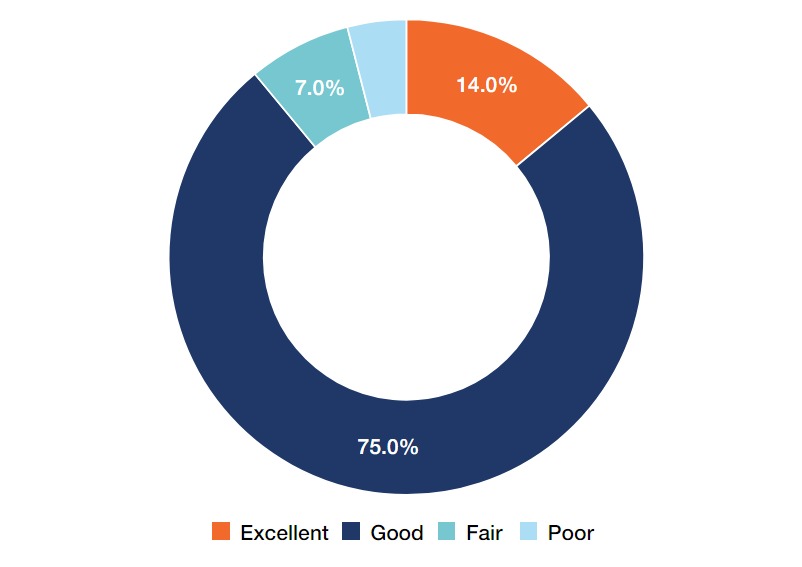
To borrow the title of Jim Collins’ book “Good to Great: Why Some Companies Make the Leap…And Others Don’t,”7 these results suggest that many companies have work to do to make the leap from “Good” to “Excellent” in how their customers would rate their last-mile delivery service and drivers.
Why isn’t “Good” good enough? Because you run the risk of losing customers. According to research conducted by PwC, “in the U.S., even when people love a company or product, 59% will walk away after several bad experiences, 17% after just one bad experience.”
There are many factors that separate an “excellent” delivery experience from a “good” one. For example, a “good” delivery experience is when an order is delivered on time as promised. However, that same delivery becomes an “excellent” one if the driver takes the extra step of placing the package in a safe place (minimizing its risk of theft) or where it won’t get rained on all day. In Springfield, IL, for example, a FedEx driver “went the extra mile and swept snow off [a customer’s] front porch before delivering her package.”8
What separates a “good” driver from an “excellent” one in the eyes of customers? A smile and a friendly greeting often makes a big difference. Drivers are in the customer relationship management business, which is why the employment firm Monster includes “Establishes and maintains outstanding relations with customers” as an important job responsibility for delivery drivers.9
Why Drive Satisfaction Matters
In their August 2019 Harvard Business Review article, “The Key to Happy Customers? Happy Employees,” Andrew Chamberlain and Daniel Zhao from Glassdoor (a website where current and former employees anonymously review companies) write:
“In our new study we asked: Can companies help to achieve high customer satisfaction by investing in employees and ensuring that those who deliver goods and services are themselves satisfied with their jobs?
Our answer was clear: There is a strong statistical link between employee well-being reported on Glassdoor and customer satisfaction among a large sample of some of the largest companies today. A happier workforce is clearly associated with companies’ ability to deliver better customer satisfaction — particularly in industries with the closest contact between workers and customers.“10
– Andrew Chamberlain and Daniel Zhao, Glassdoor
The authors found that “each one-star improvement in a company’s Glassdoor rating corresponds to a 1.3-point out of 100 improvement in customer satisfaction scores — a statistically significant impact, which was more than twice as large in industries where employees interact closely and frequently with customers.”11
Simply put, driver satisfaction matters because, to paraphrase the title of the HBR article, the key to happy customers is happy drivers.
Driver satisfaction also matters because finding and retaining drivers is an ongoing issue in the industry. As reported by Brian Straight in Modern Shipper, “37.8% of last-mile delivery firms in North America said finding qualified drivers to hire is their biggest issue. That far outpaced the number two concern, which was reducing last-mile process inefficiencies, cited by 24.4% of respondents.”12
Our survey sheds light on this issue too. The vast majority of the respondents see the market for finding qualified delivery drivers as becoming “Much more challenging” (46%) or “More challenging” (43%) in the next 12-24 months.
The current market for finding qualified last-mile/home delivery drivers is challenging. Do you see it becoming more or less challenging in the next 12-24 months?
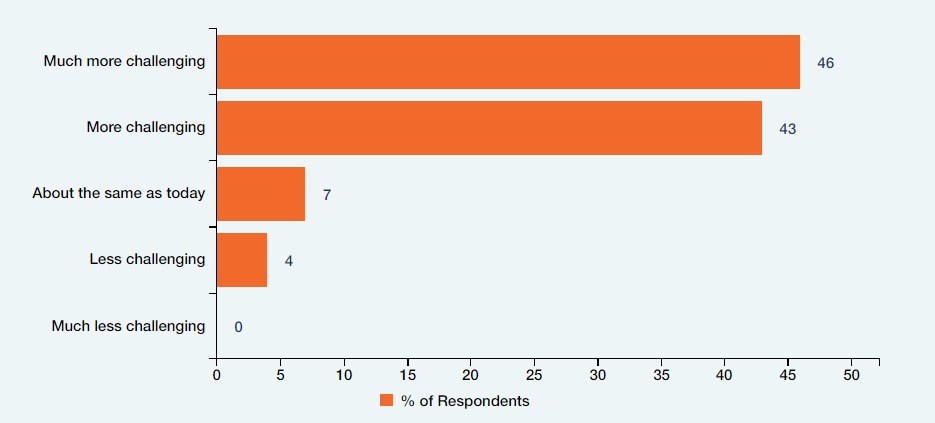
As one executive commented, “It is very challenging, especially [during this] e-commerce boom. Hiring and retention are the two main components of a manager’s role these days.”
Therefore, retaining existing drivers is going to be critically important in the months and years ahead, not only because finding new drivers will be on ongoing challenge, but because existing drivers already have established relationships with customers; they already know the routes well and the nuances of each delivery location; and they have already moved through the learning curve of the job that ultimately results in more productive and safe operations.
Whether it is to improve customer satisfaction or improve driver retention (and the latter influences the former), measuring and improving driver satisfaction is a must.
How to Improve Driver Satisfaction
What are the top three contributing factors to improving driver satisfaction?
“Fair and consistent daily workload” received the most votes overall (22), meaning the respondents selected it as either a #1, #2, or #3 factor. “Higher wages/better benefits” came in second overall in total votes (21).
What are the top contributing factors to improving driver satisfaction?
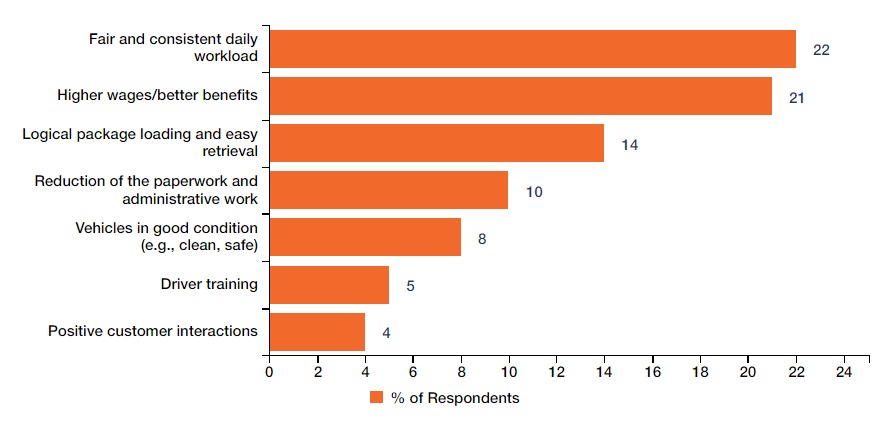
The rankings were reversed, however, when looking at the percentage of “#1 Contributing Factor” votes. Here “Higher wages/better benefits” topped the list with 38% of “#1 Contributing Factor” votes, followed by “Fair and consistent daily workload” with 29% of the votes.
What are the top contributing factors to improving driver satisfaction?
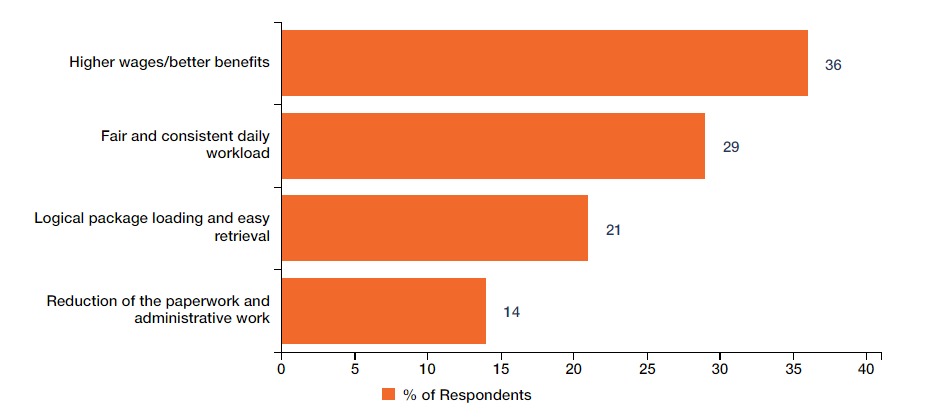
Either way, those two factors are clearly the two most important to improve driver satisfaction, with “Logical package loading and easy retrieval” rounding out the top three. Here are some value-added comments from the respondents:
Drivers want predictable jobs when the shift starts, as well as the same workload every day (no surprises).
Our drivers are paid based on commission, as a calculation of an amount per stop, per unit, and a % of revenue. It’s important that they feel that their route is sequenced in the most efficient way, so they can earn the most commission for their time. Extra miles and time will only dilute their calculated hourly rate, not pay them more (efficiency is tempered by safety, and the drivers understand that). On the other side of that perspective, the routes must be balanced and adjusted to prevent burnout.
Drivers would like to have a clear overview of their tasks for the day; no long searches in the vehicle [to find packages]; they want to focus on driving and service, with direct guidance to the stops (no searching on maps).
I think drivers are most satisfied when they have a logical route that they can navigate quickly and efficiently and complete their delivery and collection activity in a time-efficient manner.
Drivers want to be seen and receive a ‘Thank you’ from management and customers. All other factors are minor. As for technology, drivers must see it as a help, not as a means to control them.
Drivers want to have hardware that works for their purpose (e.g., scanners that contain all the information they need); good guidance (GPS, based on their sequencing); [routes] that are correct and make sense in an efficient way of driving; and digital information (i.e., no need for manual paperwork).
Technology becomes [an important] factor in terms of making better balanced routes and making paperwork simple.
Summary & Recommendations
Last-mile delivery is tightly linked with customer experience, which is becoming a greater competitive differentiator across many industries. Which employees are in the driver’s seat to deliver the best customer experience? The answer, of course, is drivers.
Our survey results suggest that many companies have work to do to make the leap from “Good” to “Excellent” in how their customers would rate their last-mile delivery service and drivers. One of the first steps in that journey is to start measuring driver satisfaction, which relatively few companies do today.
Improving driver satisfaction is especially important because finding and retaining qualified drivers is a big challenge in today’s market — and it will continue to be a challenge moving forward.
While providing drivers with higher wages and better benefits is one way to boost driver satisfaction, there are other factors that are important too, like providing them with fair and consistent daily workloads and loading packages into vehicles in a logical manner for easy retrieval. Enabling these two factors, in particular, is where investing in last-mile technology like route planning and optimization solutions can help.
When developing the business case for last-mile technology, however, companies need to elevate the importance of improving driver satisfaction and retention. In our survey, “Improve driver satisfaction” ranked near the bottom of the business justification list, receiving only 4% of “#1 Justification” votes.
When developing the business case for investing in last-mile technology for your home delivery operations, how would you rank the following justification factors?
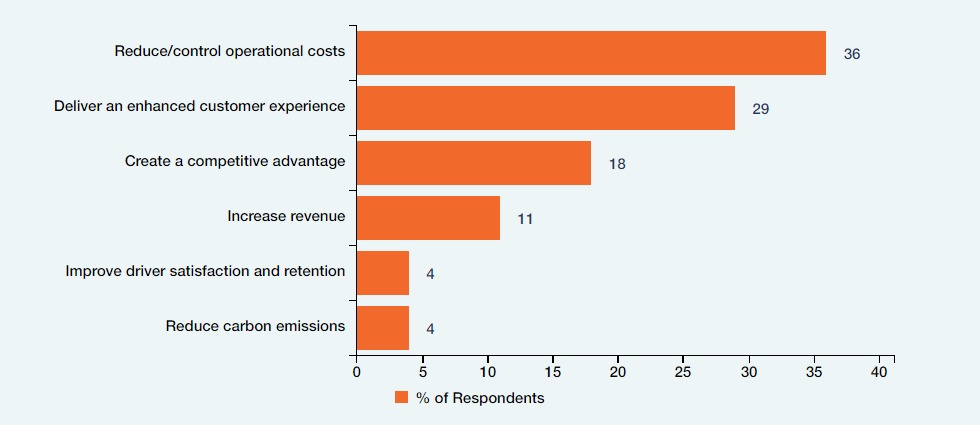
In contrast, “Deliver an enhanced customer experience” ranked second overall with 29% of “#1 Justification” votes, behind “Reduce/control operational costs” (36%).
On the one hand, 90% of our survey respondents agree or strongly agree that there is a direct link between driver satisfaction and customer satisfaction. On the other hand, that link is not getting recognized in the business case for last-mile technology investments.
Simply put, companies need to recognize that when it comes to delivering the best customer experience in last-mile delivery, drivers are in control. To paraphrase Richard Branson, if you take care of your drivers, they will take care of your customers.

RouteSmart Technologies commissioned Adelante SCM to develop this research report surveying 28 industry executives in the last-mile delivery industry.
Adelante SCM is a peer-to-peer learning, networking, and research community for supply chain and logistics professionals. Adelante includes the Talking Logistics blog and video talk show featuring supply chain thought leaders, and Indago market research service that brings together logistics professionals who share their industry experience while giving back to charitable causes.
RouteSmart Technologies provides route optimization solutions that solve the most complex vehicle routing challenges with unrivaled precision and processing performance to reduce costs, enhance safety, and create efficiencies for postal and last-mile delivery clients around the world.
Download the PDF version of this report
Citations
1 “Understanding Customer Experience,” Andre Schwager and Chris Meyer, Harvard Business Review, February 2007
2 Ibid.
3 “15 definitions of customer experience,” David Balaban, Oracle blog post, February 7, 2020
4 “Last-Mile Delivery,” Indago research report, February 2021 (n=27)
5 https://www.headspacegroup.co.uk/sir-richard-branson-employees-come-first/
7 “Experience is everything: Here’s how to get it right,” PwC, 2018
8 “FedEx driver goes the extra mile for Springfield woman,” Fox Illinois, February 13, 2021
9 https://hiring.monster.com/resources/job-descriptions/transportation/delivery-driver/
10 “The Key to Happy Customers? Happy Employees,” Andrew Chamberlain and Daniel Zhao, Harvard Business Review, April 19, 2019
11 Ibid.
12 “Last-mile delivery firms call lack of drivers their main concern,” Brian Straight, Modern Shipper, August 11, 2021